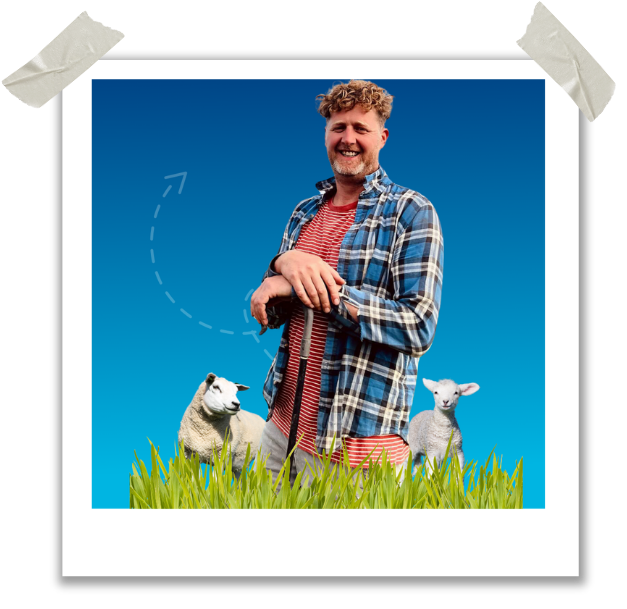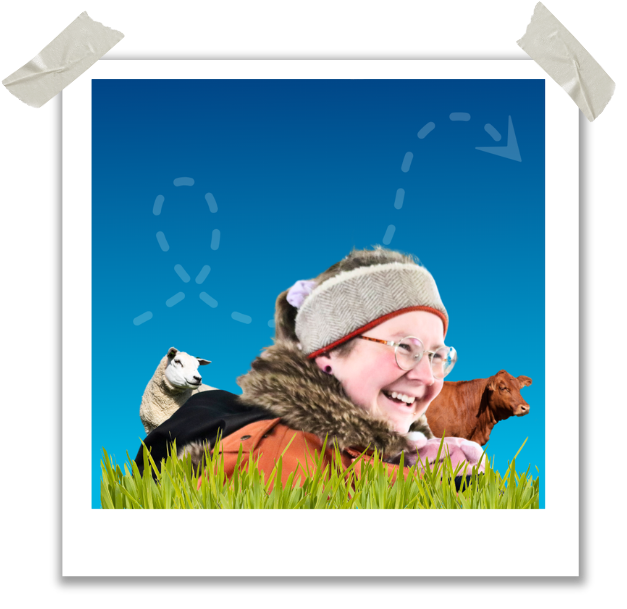FARMER STORY
George Sturla
Beeches Farm | Gwespyr, Wales
In 2016 George Sturla started Beeches Farm, a solo part-time farming venture in North Wales.

FARMER STORY
George Sturla
Beeches Farm | Gwespyr, Wales
In 2016 George Sturla started Beeches Farm, a solo part-time farming venture in North Wales.


Farm business
We effectively run three flocks using the iLivestock app, a pedigree flock, a replacement / breeding flock, and a commercial flock. We are a closed flock, meaning that we avoid buying in stock, and instead breed our own. For this rreason,it is very important that we closely monitor our stock, to ensure that we only breed from the best animals.
Firstly, we have a pedigree flock made up of Beltex and Blue Texel sheep. We aim to breed our own high quality rams, rather than buying them in. Secondly, our replacement / breeding stock consists of pure Lleyn ewes, meaning we don’t need to buy ewes in, and can maintain a closed flock. It is important for us to only breed from the best ewes. Lastly, we cross our Lleyn ewes with our own Beltex or Blue Texel rams to produce lambs to be sold as meat. We sell our lambs directly to customers via our local meat box business.
"Everything was paper based. Not something I excelled at. I wanted to move to electronic animal recording, but I was looking for a way that wasn't gonna cost me an arm to set up."
Monitoring sheep traits
We use the app to monitor for any negative traits, such as lameness. The app has a useful flagging system so we can add a ‘red flag’ each time we notice a negative trait. We try to apply a simple ‘three strikes and you’re out rule’. This helps us to identify ewes that are performing poorly and helps prevent us from breeding from poor stock.
For example, after reviewing our scanning results last year, we restocked and brought our flock down from 200 ewes to 140. This decision is paying off. We'll find out when scanning comes, but by looking at the body condition of the ewes so far, they're all looking a lot better. By culling out ewes with foot rot and keeping an eye on everything, we've definitely improved that side of things as well.
We also farm a mixed herd of Angus cross and British Longhorn. EID tags have proved to be useful there as well. Most of our cows are artificially inseminated. We can track all the breeding records by using just the app. By scanning the ear tag, everything you need to know about the cow is right there: from the date the insemination took place to sire information. It has taken away a lot of headache.
"We use the eWeigh system to weigh and monitor lambs. Tracking their weight gain provides insight into when the lambs will be ‘ready’. As we sell our lamb directly to customers, this insight is an important guide to monitor orders."
Weighing
We had electronic weight scales before. Just a standard setup to know how much the lambs are weighing. I had no way of tracking this information and monitoring my ewes in one place. We now use eWeigh, iLivestock’s own hardware weighing system, to keep track of weight as it is a key indicator.
We weighed all the ewes right after we signed up in the summer. And then we weighed ewes just before tupping. That's been really helpful. You can see the difference in the weight gain they've put on. We use the eWeigh system to weigh and monitor lambs. Tracking their weight gain provides insight into when the lambs will be ‘ready’. As we sell our lamb directly to customers, this insight is an important guide to monitor orders.
Animal recording
When you are thinking about setting things up for your farm, my tip for new users would be to spend time entering all your animals. Put as many details in as you can to start with, because it pays dividends later on. You can only draw conclusions from what you put in. This can take a bit of time, but it will be worth it.
There are different ways of grouping sheep or cows. I run most of my ewes by age groups, but every farm is different. Group the animals to how you manage them. That's the flexibility of the app. It allows you to go into a lot of detail, or you can keep it very simple. Also, don’t expect instant results. It’s going to take time to draw conclusions that will impact future farm decisions.
Farm business planning
We are still in our first year of data-capturing our animal records with iLivestock, but my predictions are that it will be much easier and quicker to identify poor performing ewes going forward. This will allow us to breed to select better mothering traits (i.e. high lambing percentage and mothering). The app will allow us to monitor the relative performance of our Beltex and Blue texel rams.
"Spend time entering all your animals. Put as many details in as you can to start with, it’ll pay off further down the line."



